Riding my Own Bike Again
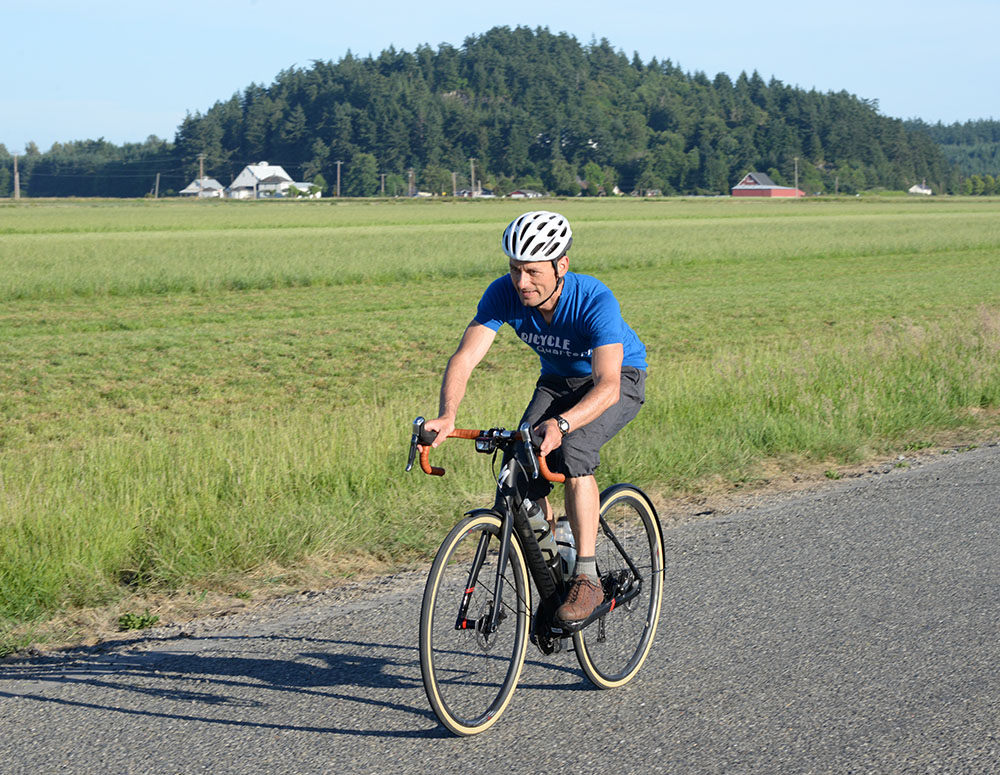
When I test bikes for Bicycle Quarterly, I treat them like my own bike. I ride them for several weeks, often exclusively so I get used to the bike and get attuned to its peculiarities. Features that were unfamiliar at first soon become second nature. And conversely, minor issues may become significantly annoying with repeated use.
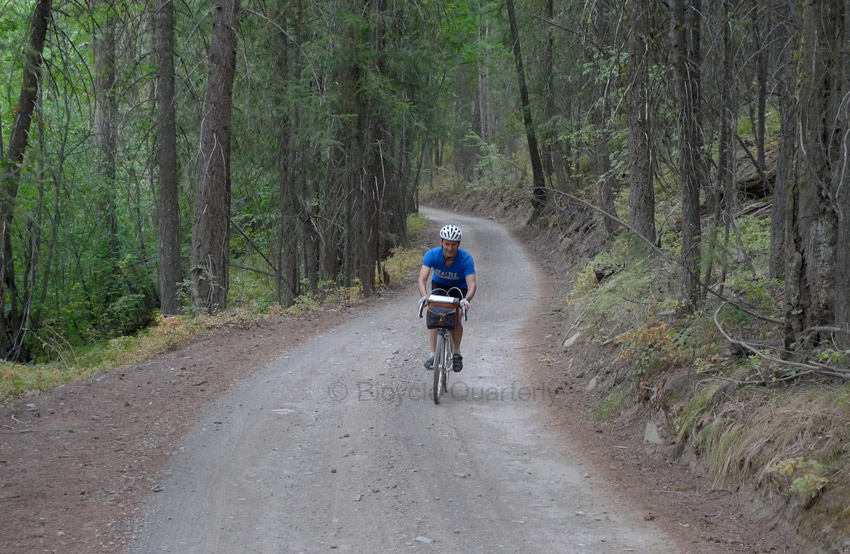
It’s always interesting to go back to my own bike. The most noticeable adjustments happen after riding a modern machine with electronic shifting. Everything on my bike feels different at first, and I wonder whether my Herse isn’t terribly outdated. It seems odd that I need to take my hands off the bars to shift. And the frame and fork feel so flexible at first…
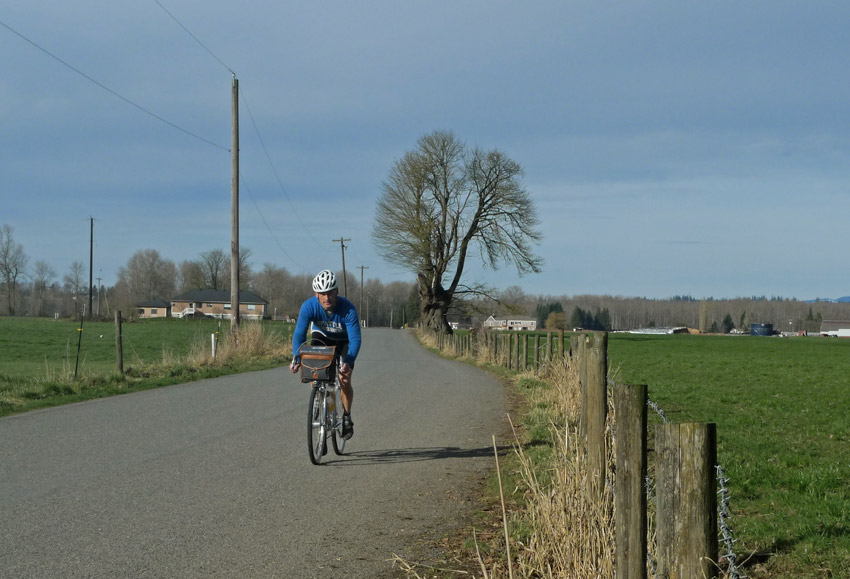
But then it all comes back to me. I enjoy the light touch and immediate action of the Nivex rear derailleur. Yes, that is how I like shifting to be!
I also notice how the bike breathes with the surface, almost floating over the bumps and undulations, yet never feeling soft or under-damped. It’s a great feeling, with none of the chatter you get with stiff forks and relatively narrow tires.
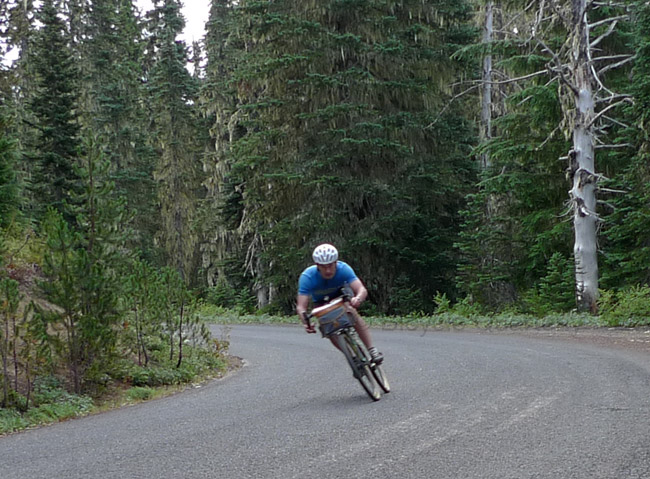
More recently when I was back on my own bike, I was having trouble rounding corners. At first, I turned in too abruptly, and then in mid-corner, I was running wide. I realized that the bike I had ridden for a few weeks had much more trail. It required larger steering inputs to get it to lean, but then it fell abruptly into the turn. I had become used to almost yanking on the bars, but then compensating by “catching” the bike to prevent it from leaning too far.
On my bike, the cornering response is much more linear, and none of these adjustments are needed. Once I adapted to my bike again, I was happy to rediscover how precise a bike can handle. I also had to readjust to the greater cornering grip of the 42 mm-wide tires. It’s amazing how much more traction they have compared to 32 mm tires. It took a little time until I was comfortable staying off the brakes in corners where I had to slow down a little on the test bike.
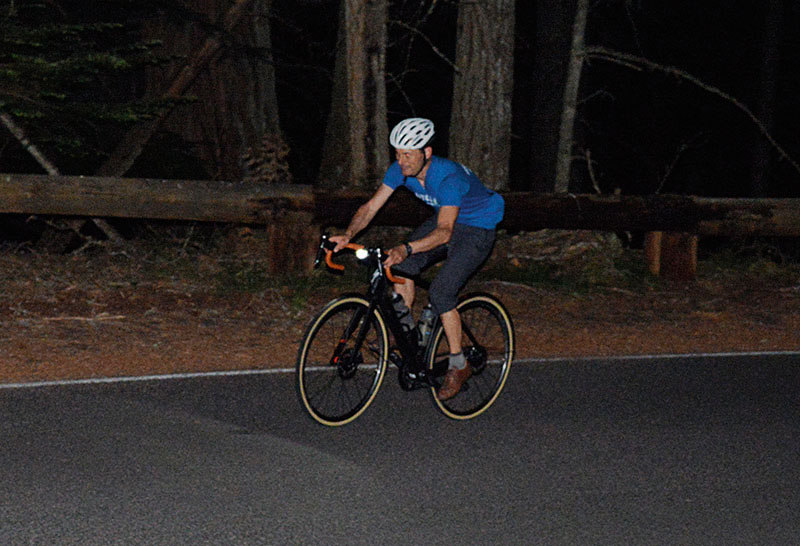
I always write my test report before riding my own bike again. That ensures that my impressions are true to that bike, and not relative to my favorite bike. I want the article in Bicycle Quarterly to express how an owner would experience the bike, and I’m sure that many, many owners will love whatever bike I am testing. With our reputation for honest appraisals, it’s rare that somebody sends us a mediocre bike…
Every bike has its strengths and weaknesses, and I think some riders might not like my Herse at all. If you prefer a firm grip on the handlebars, the low-trail geometry may feel scary. It reacts precisely to your inputs, which means it works well with a light touch on the handlebars. And the shifting, especially for the front derailleur with its rod behind the seat tube, might challenge riders who are not so comfortable riding with just one hand on the handlebars. And the extra cornering traction of the wider tires doesn’t mean much if you are a cautious descender…
There definitely are preferences in how we like our bikes to respond, and it’s great that different bikes are available to cater to those preferences. For us as testers, the goal has to be to determine which rider would like the bikes we test, and evaluate them in that context.
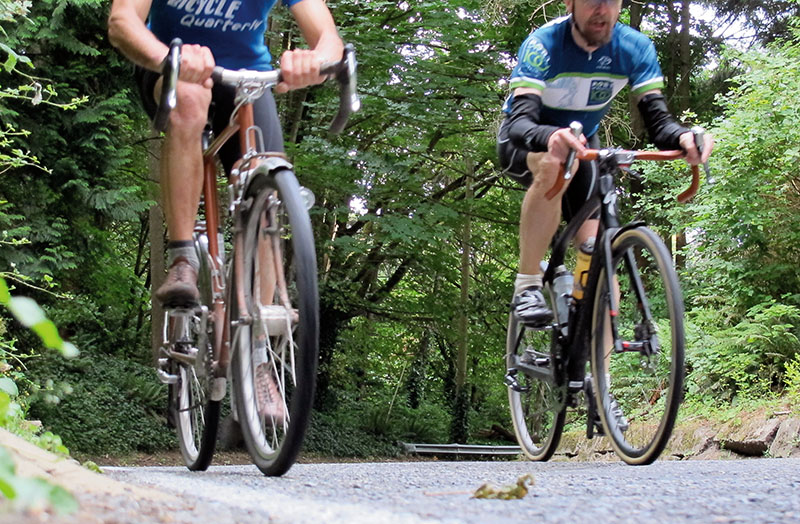
The differences between test bikes and our own machines often disappear when it comes to how they respond to our pedals strokes. Both my “classic” bike and the recent modern machine “planed” extremely well. The best bikes, whether modern or classic, feel remarkably similar, whether you pedal all-out or whether you are just spinning along. They put a smile on my face, and to me, that is the most important aspect of any bike.


